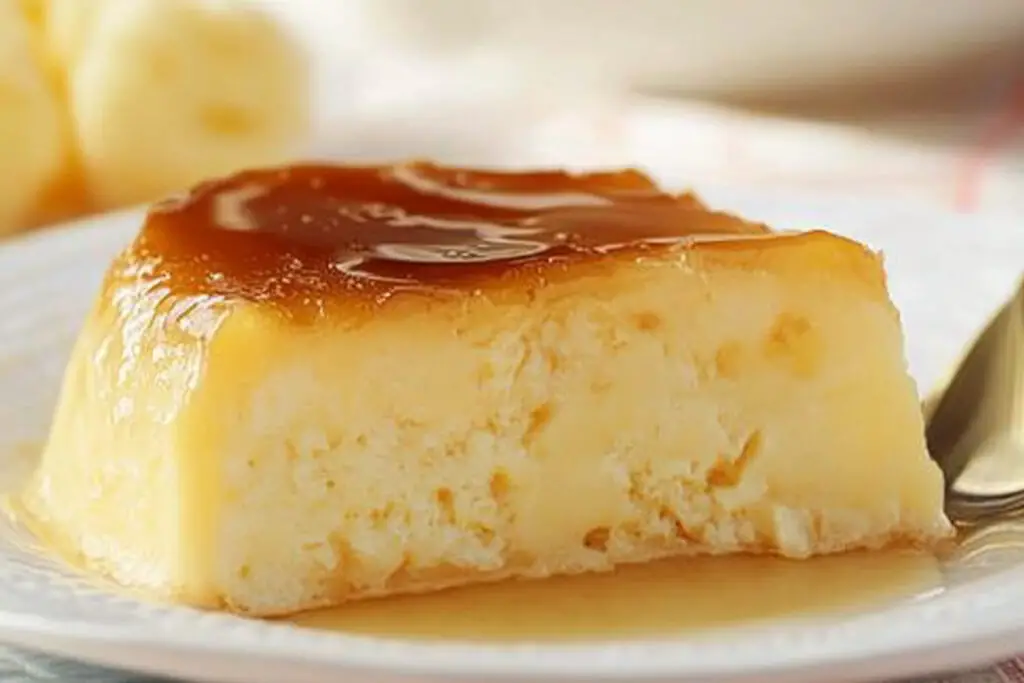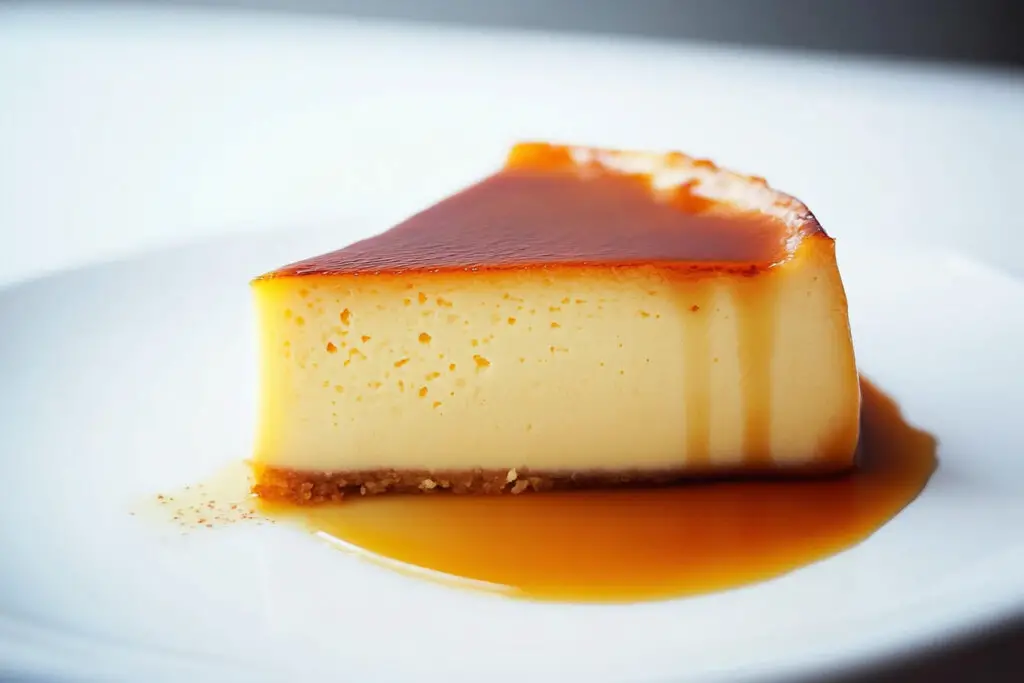Table of Contents
What is Quesillo?
Quesillo is a beloved culinary delight that hails from Latin America. This soft, creamy cheese is renowned for its delicate flavor and versatility in various dishes. While it is often compared to mozzarella or string cheese, quesillo has its own distinct characteristics that set it apart. Known for its smooth texture and melt-in-your-mouth quality, quesillo is a staple ingredient in many traditional recipes, from arepas and empanadas to desserts and snacks.
Origin and History of Quesillo
The origins of quesillo trace back to the heart of Latin America, where cheese-making traditions have been an integral part of the local culture for centuries. Specifically, quesillo, which means ‘little cheese’ in Spanish, was likely developed as a practical way to preserve milk. Over time, it evolved into a unique variety of cheese, celebrated for its mild flavor and pliable texture. Furthermore, its versatility has cemented its place in diverse culinary applications.
Different regions have their own variations of quesillo, with some adding specific herbs or spices during the cheese-making process. In Mexico, quesillo is often associated with Oaxaca, where it is rolled into balls or ribbons and used in various local dishes. Similarly, countries like Venezuela and Colombia have their versions of quesillo, each with subtle differences that reflect the region’s culinary identity.
The Cultural Significance of Quesillo in Latin America
creamy flan is more than just a cheese; it is a symbol of cultural heritage and community in Latin America. It plays a central role in traditional celebrations, family gatherings, and everyday meals. Whether it’s melted over a hot arepa in Venezuela or used as a topping for tacos in Mexico, quesillo brings people together through shared culinary experiences.
Beyond its role in savory dishes, quesillo also finds its way into desserts. In countries like Venezuela, quesillo refers to a flan-like dessert made with eggs, milk, and caramel. Notably, this sweet variation is a favorite at festive occasions, further showcasing the adaptability of the term ‘quesillo’ in the culinary lexicon.
In many rural communities, the production of quesillo supports local economies, with artisanal cheesemakers preserving time-honored methods. Moreover, this cheese embodies the ingenuity and resilience of Latin American food traditions, demonstrating how simple ingredients can transform into something truly special.
By understanding and appreciating quesillo, we connect with the rich tapestry of Latin American culture, one delicious bite at a time.
How Quesillo is Made
Ingredients Needed for Authentic Quesillo
To create authentic quesillo, you’ll need a handful of basic ingredients, reflecting its humble origins. The following list highlights the essentials for making traditional quesillo:
- Fresh Cow’s Milk: The primary ingredient, providing a rich and creamy base.
- Rennet or Lemon Juice: Used to curdle the milk and separate the curds from the whey.
- Salt: Enhances the flavor and helps preserve the cheese.
- Water: For boiling or rinsing the cheese during the process.
Optional ingredients such as herbs, spices, or smoked milk can be added to create regional variations or to infuse the cheese with a unique flavor.
Step-by-Step Preparation Process
Making quesillo at home is a rewarding experience that involves a few simple steps:
- Heat the Milk: Warm fresh cow’s milk in a large pot over low heat. Stir gently to prevent scorching.
- Add Rennet or Lemon Juice: Introduce the rennet or an acid (like lemon juice or vinegar) to the milk, stirring well. This initiates the curdling process.
- Let It Sit: Allow the milk to sit undisturbed for about 30 minutes. During this time, the milk will separate into curds (solid) and whey (liquid).
- Cut and Cook the Curds: Once the curds have formed, cut them into small cubes using a knife and heat gently to expel more whey. Stir occasionally to ensure even cooking.
- Strain the Curds: Pour the mixture through a cheesecloth-lined strainer to drain the whey. Press the curds lightly to remove excess liquid.
- Salt the Curds: Sprinkle salt evenly over the curds to season and preserve the cheese.
- Shape the Cheese: Knead the curds into a pliable dough-like consistency. Depending on preference, shape it into balls, ribbons, or blocks.
- Store and Enjoy: Wrap the quesillo in plastic wrap or store it in an airtight container. It can be refrigerated for up to a week.

Modern Variations of Quesillo
While traditional quesillo remains a classic, modern interpretations have introduced exciting twists to this beloved cheese:
- Flavored Quesillo: Infused with herbs like oregano, chili flakes, or garlic for an extra punch of flavor.
- Smoked Quesillo: Offers a rich, smoky aroma, popular in some regions of Mexico and Central America.
- Vegan Quesillo: Made using plant-based milks such as almond or cashew, with nutritional yeast for cheesy flavor and agar-agar as a setting agent.
- Dessert Quesillo: In Venezuela, “quesillo” also refers to a dessert flan, incorporating caramel and custard for a sweet take on the name.
These variations reflect how quesillo continues to evolve while staying rooted in tradition, appealing to a wide range of tastes and dietary preferences. Whether enjoyed in its classic form or with a modern twist, quesillo is a testament to the creativity and adaptability of Latin American cuisine.
Types of Quesillo Around the World
Quesillo in Mexico
In Mexico, quesillo is synonymous with Oaxaca cheese, a stretchy, stringy cheese that resembles mozzarella in both appearance and texture. This variety is a staple in Mexican cuisine and is particularly loved for its versatility.
- Characteristics: soft cheese in Mexico is mild in flavor, with a creamy and slightly salty taste. It is often rolled into balls or long ribbons, making it easy to pull apart or melt.
- Uses: It is a key ingredient in quesadillas, enchiladas, and tlayudas, where its excellent melting properties add richness and texture. It’s also popular as a topping for tacos and tostadas.
“The cheese plays a vital role in the culinary traditions of Oaxaca, where local artisans craft it with skill and rely on its production as both an art and a livelihood. Furthermore, it embodies the region’s rich cultural heritage.”
Quesillo in Venezuela
In Venezuela, quesillo takes on a completely different identity as a dessert flan rather than a cheese. This version is a sweet, custard-like dish made with eggs, condensed milk, and caramel.
- Characteristics: Venezuelan soft cheese has a creamy, silky texture and a rich, caramelized flavor. It is similar to Spanish flan but often includes whole eggs, giving it a slightly denser consistency.
- Uses: Served as a dessert, Venezuelan soft cheese is a must-have at celebrations, holidays, and family gatherings. Its sweet flavor and melt-in-your-mouth quality make it a favorite treat.
This version of soft cheese is a testament to the word’s adaptability, showcasing how culinary traditions can transform across borders.
Other Regional Adaptations
Beyond Mexico and Venezuela, soft cheese also appears in various forms across Latin America and beyond, each showcasing unique regional influences. Furthermore, its versatility highlights the diverse culinary traditions of these regions.
Nicaragua
- Nicaraguan quesillo is a street food staple consisting of a thick, soft cheese wrapped in a tortilla and topped with pickled onions and a splash of cream. It is a quick, satisfying snack that combines salty, tangy, and creamy flavors.
Colombia
- In Colombia, soft cheese resembles fresh mozzarella and frequently accompanies arepas or features in simple, traditional dishes. Moreover, its mild flavor complements a wide range of accompaniments.
El Salvador
- Salvadoran soft cheese is a soft, white cheese with a creamy consistency, often stuffed into pupusas, the country’s iconic thick tortillas. Consequently, it melts beautifully, creating a gooey and irresistible filling.

Spain and Canary Islands
- In the Canary Islands, soft cheese refers to a dessert similar to Venezuelan flan, reflecting the influence of Spanish colonization on Latin American culinary terms and recipes. Additionally, it showcases the interconnectedness of these culinary traditions.
Nutritional Value
Macronutrient Composition
Quesillo, depending on its form (cheese or dessert), offers a distinct macronutrient profile. Here’s a breakdown for the cheese version, which is most commonly consumed:
- Protein: soft cheese is rich in high-quality protein, making it an excellent source of essential amino acids that support muscle growth and repair.
- Fat: It contains a moderate amount of fats, including saturated fats, which contribute to its creamy texture and flavor.
- Carbohydrates: Traditional cheese-based soft cheese is low in carbohydrates, though dessert versions like flan soft cheese are higher in carbs due to added sugar.
- Calories: A typical serving of soft cheese cheese is calorie-dense, making it a good source of energy, especially for physically active individuals.
For dessert soft cheese, the nutritional content shifts, with higher carbohydrate and sugar levels but lower protein content.
Health Benefits
Quesillo, when consumed in moderation, offers several health benefits:
- Rich in Calcium: As a dairy product, soft cheese is an excellent source of calcium, supporting strong bones and teeth while helping to prevent osteoporosis.
- High-Quality Protein: The protein in soft cheese aids in muscle repair, growth, and overall body function.
- Vitamin Source: It contains vitamins such as B12 and riboflavin, which are vital for energy production and maintaining a healthy nervous system.
- Low-Carb Option: Cheese soft cheese is a good choice for low-carb or ketogenic diets, as it provides energy and nutrients without a significant carbohydrate load.
- Probiotics: If soft cheese is made with unpasteurized milk, it may contain beneficial probiotics that support gut health.
For dessert soft cheese, the benefits are primarily in the joy it brings as an indulgent treat. However, it should be eaten in moderation due to its sugar content.
Tips for Including Quesillo in a Balanced Diet
Here are some practical ways to enjoy soft cheese without compromising on a balanced diet:
- Portion Control: Limit your serving size to enjoy its rich flavor while avoiding excess calories or fats.
- Pair with Vegetables: Add quesillo to salads, stuffed peppers, or as a topping for steamed vegetables to boost flavor and nutrition.
- Combine with Whole Grains: Use quesillo as a filling for whole-grain tortillas or pair it with quinoa for a balanced meal.
- Opt for Low-Fat Versions: Look for reduced-fat quesillo options if you’re monitoring fat intake.
- Balance Dessert Consumption: For sweet quesillo, pair it with fresh fruit or serve it as an occasional treat rather than a daily indulgence.
- Include in Protein-Rich Snacks: Use quesillo as a quick protein boost by adding it to crackers or pairing it with nuts.
By integrating quesillo thoughtfully into your meals, you can enjoy its creamy, delicious qualities while reaping its nutritional benefits.
How to Enjoy Quesillo
Pairing Quesillo with Other Foods
Quesillo’s versatility makes it a delightful addition to various dishes, and pairing it with complementary foods enhances its flavor and texture:
- With Bread or Tortillas:
- Serve soft cheese with warm, freshly baked bread, arepas, or tortillas for a classic pairing.
- Use it as a filling for quesadillas or empanadas to create gooey, comforting bites.
- With Fruits:
- Combine soft cheese with sweet fruits like figs, apples, or pears for a contrast of flavors.
- Drizzle honey over soft cheese and pair with nuts for a gourmet snack.
- With Vegetables:
- Add quesillo to salads, roasted vegetables, or stuffed peppers for a creamy, savory touch.
- Top zucchini noodles or sautéed spinach with melted soft cheese for a low-carb meal.
- With Meats:
- Pair quesillo with cured meats like ham or chorizo for a rich, indulgent appetizer.
- Use it as a topping for grilled chicken or burgers to elevate your dish.
Creative Uses of Quesillo in Recipes
Take soft cheese beyond traditional dishes with these creative ideas:
- Cheese-Stuffed Appetizers:
- Wrap quesillo in puff pastry or phyllo dough to create cheesy bites for parties.
- Use quesillo as a filling for jalapeño poppers for a spicy twist.
- Pasta and Rice Dishes:
- Mix quesillo into baked pasta dishes like lasagna for a gooey layer of cheese.
- Stir melted quesillo into risotto for a creamy, indulgent texture.
- Breakfast Creations:
- Add quesillo to scrambled eggs or omelets for a protein-packed start to your day.
- Use it as a topping for avocado toast with a sprinkle of chili flakes.
- Desserts:
- Combine soft cheese with sweetened condensed milk to create a rich dessert dip.
- Incorporate it into cheesecake recipes for a unique flavor profile.
- Fusion Cuisine:
- Experiment with soft cheese in international dishes like quesillo-stuffed sushi rolls or soft cheese pizza for an innovative twist.
Common Myths and Misconceptions
Like many beloved foods, quesillo is surrounded by myths and misconceptions. Let’s debunk a few:
- Myth: Quesillo is the Same Everywhere
- Fact: While the name “quesillo” is used across Latin America, its form varies widely—from a stretchy cheese in Mexico to a custard-like dessert in Venezuela.
- Myth: Quesillo is Unhealthy
- Fact: Quesillo can be part of a healthy diet when consumed in moderation. It is a good source of protein, calcium, and other nutrients.
- Myth: Quesillo is Hard to Make at Home
- Fact: While artisanal soft cheese may require skill, homemade soft cheese is simple to prepare with basic ingredients like milk, rennet, and salt.
- Myth: Quesillo Only Has Savory Applications
- Fact: Quesillo can be both savory and sweet. It’s a versatile ingredient that shines in both main dishes and desserts.
- Myth: All Quesillo is Made from Cow’s Milk
- Fact: While cow’s milk is traditional, soft cheese can also be made with goat’s milk or plant-based alternatives for unique flavor profiles.
By understanding the true nature of soft cheese, you can fully appreciate its culinary richness and cultural significance.

soft cheese, a beloved traditional dessert, pairs wonderfully with other authentic Mexican dishes. For a complete culinary experience, why not explore an easy chilaquiles recipe to accompany your meal? Both recipes highlight the rich and diverse flavors of Mexican cuisine, making them perfect for any gathering or a cozy evening at home.
FAQs About
What is quesillo made of?
To make quesillo, fresh cow’s milk is curdled using rennet or an acidic agent like lemon juice or vinegar. The process separates the curds from the whey. Afterward, the curds are salted and kneaded to form a pliable cheese. For Venezuelan soft cheese, the dessert preparation involves whisking eggs with sweetened condensed milk, regular milk, and caramel to create a rich, creamy treat.
What is the difference between quesillo and Leche Flan?
While both are creamy desserts, soft cheese and leche flan have distinct differences:
- Quesillo (Venezuelan style) uses whole eggs, including the whites, which gives it a slightly denser and airier texture due to small air pockets.
- Leche Flan (Philippines and other regions) uses only egg yolks, resulting in a creamier and smoother consistency.
- Both desserts share similar ingredients, like condensed milk and caramel, but quesillo’s texture sets it apart.
What is quesillo Honduras?
In Honduras, soft cheese refers to a type of soft, fresh cheese that is creamy and mild in flavor. People commonly use it in traditional dishes like baleadas, a tortilla-based dish, or pair it with tortillas, cream, and pickled onions for a simple, satisfying snack. Honduran soft cheese boasts a smooth texture and a melt-in-your-mouth quality.
How do you eat quesillo?
Quesillo can be enjoyed in a variety of ways depending on its form:
- As a Cheese:
- Melted in dishes like quesadillas, empanadas, or on top of arepas.
- Paired with bread, tortillas, or crackers for a simple snack.
- Sliced and served with fresh fruits or cured meats as part of a cheese platter.
- As a Dessert (Venezuelan Quesillo):
- Chilled and sliced, served with extra caramel sauce on top.
- Paired with coffee or fresh fruit for a delightful end to a meal.
- Regional Variations:
- In Nicaragua, soft cheese is served in tortillas with pickled onions and cream for a savory street food experience.
Whether as a savory cheese or a sweet treat, soft cheese is best enjoyed as part of a meal that celebrates its cultural roots.
Conclusion
In conclusion, soft cheese is a versatile and culturally rich culinary delight that varies in form across Latin America, from stretchy cheese in Mexico to creamy flan in Venezuela. Its unique flavors, textures, and adaptability make it a beloved ingredient in both traditional and modern recipes. Whether enjoyed as a savory staple or a sweet indulgence, quesillo is a testament to the creativity and heritage of Latin American cuisine.

